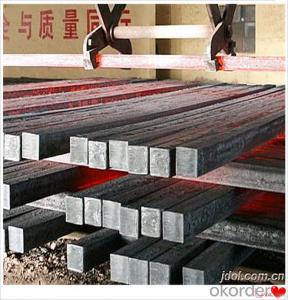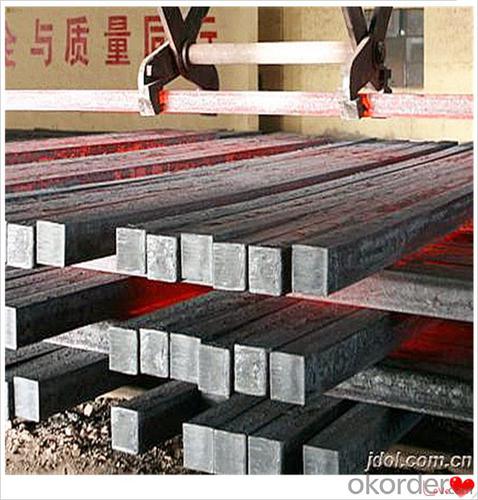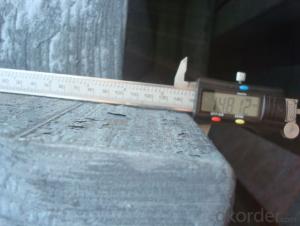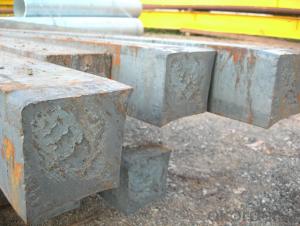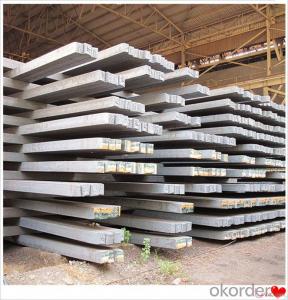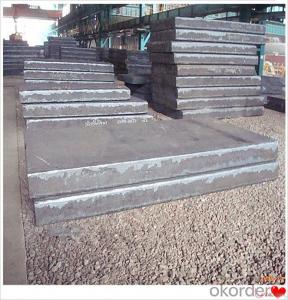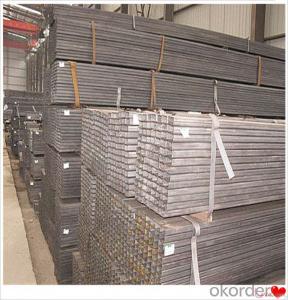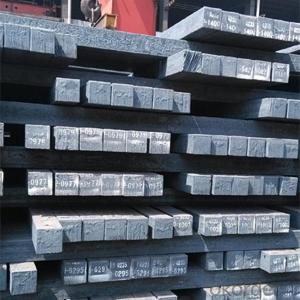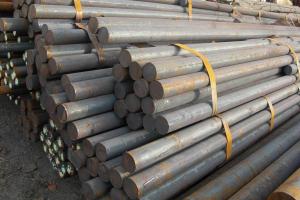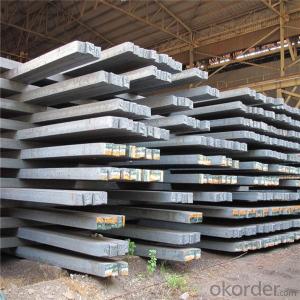Steel Billet Bar Q235 Q275 Q345 for Coke Oven Door
- Loading Port:
- Dalian
- Payment Terms:
- TT OR LC
- Min Order Qty:
- 100 m.t.
- Supply Capability:
- 50000 m.t./month
OKorder Service Pledge
OKorder Financial Service
You Might Also Like
Steel Billet Bar Q235 Q275 Q345 for Coke Oven Door
Description
Reference Price:$260/ton Mn 0.3%-0.6%
Rectangular billet continuous casting billet and mainly general carbon steel, low carbon low silicon cold-rolled material, high quality carbon structural steel, high strength low alloy steel, special steel, etc.
The billet is mainly divided into two kinds from the shape:
Slab: cross section width and height of the ratio of the larger, mainly used for rolling plate.
Billet: equal cross section width and height, or a huge difference, mainly used for rolling steel, wire rod. ,
Steel billets have distinct characteristics as compared with already furnished steel bars and products. Billets have a specific grain structure, which enables the metal to be processed more intricately. Steel billets are also known for their malleability and ductility, especially when exposed to varying temperatures during shaping and molding.
Processing of Steel Billet
Steel billets are considered fresh and raw, and they must undergo a series of manufacturing processes before they can be used for various purposes. Billets are made by means of freezing molten liquid, and are later exposed to extremely low temperatures in order to allow the metal to take shape and solidify in chemical structure. The temperature manipulates the metal's physical properties, and tones its strength and durability. The subsequent processes provide the metal's curved mold design so that it can fit the allotted space provided by other machines, which complete the finishing procedures.
Images

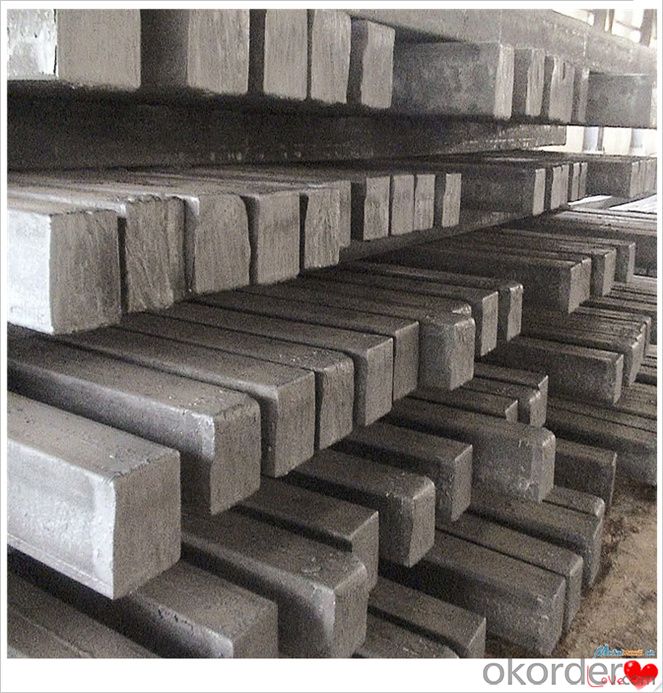
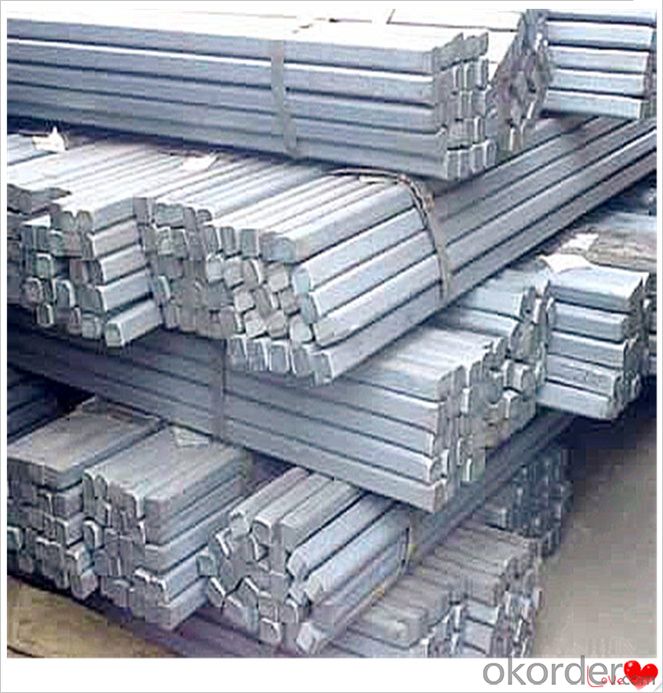
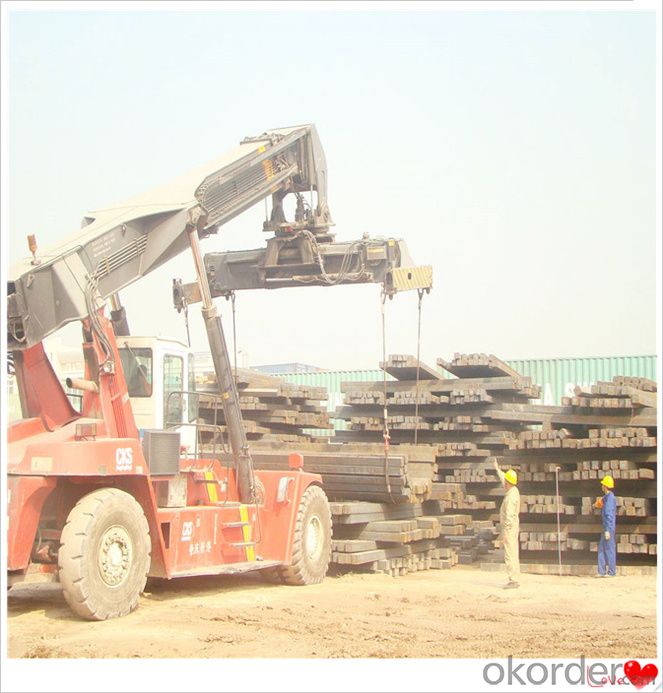
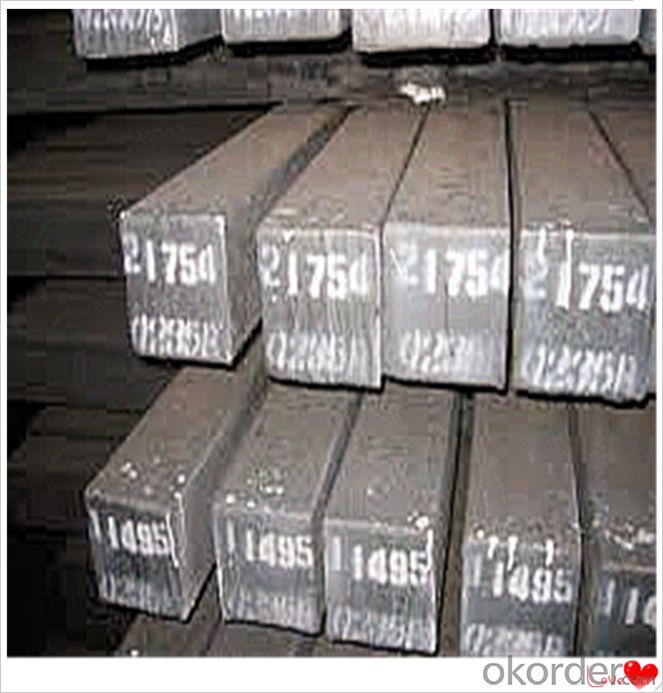
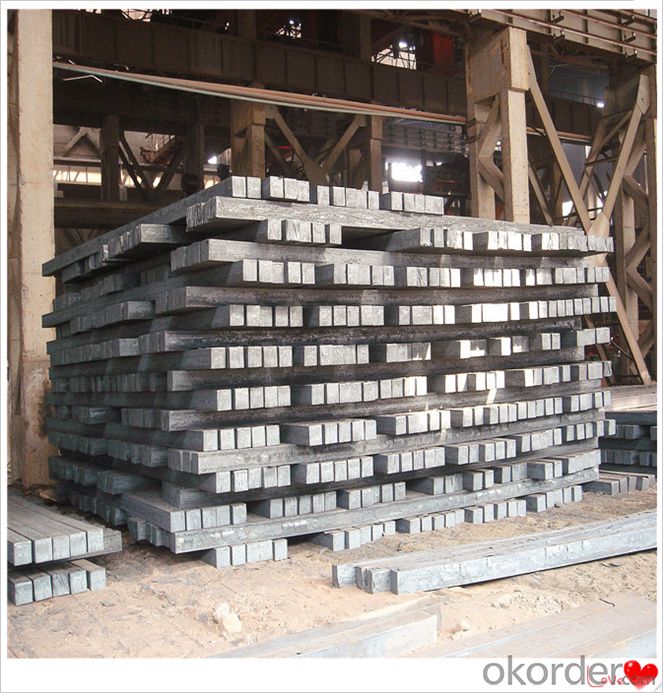
Technical Data
Size:100*100,120*120,150*150,130*130
Mn: 0.3%-0.6%
C: 1%
Cr:0.1%
Packaging
cargo ship or container
usually container price will add 15USD per ton
RFQ
We have organized several common questions for our clients,may help you sincerely:
1) How about your company?
A world class manufacturer & supplier of castings forging in carbon steel and alloy steel,is one of the large-scale professional investment casting production bases in China,consisting of both casting foundry forging and machining factory. Annually more than 8000 tons Precision casting and forging parts are exported to markets in Europe,America and Japan. OEM casting and forging service available according to customer’s requirements.
2) How to guarantee the quality of the products?
We have established the international advanced quality management system,every link from raw material to final product we have strict quality test;We resolutely put an end to unqualified products flowing into the market. At the same time, we will provide necessary follow-up service assurance.
3) How long can we receive the product after purchase?
In the purchase of product within three working days, We will arrange the factory delivery as soon as possible. The pecific time of receiving is related to the state and position of customers.Commonly 7 to 10 working days can be served.
4)Do you have your own QC department?
Yes, we have, our QC department will inspect the goods during the process of mass production and after completion of production.
hot sale!!! steel billets/ mild steel bar/ billet steel
(1): High quality steel with reasonable price.
(2): Wide excellent experiences with after-sale service.
(3): Every process will be checked by responsible QC which insures every product's quality.
(4): Professional packing teams which keep every packing safely.
(5): Trial order can be done in one week.
(6): Samples can be provided as your requirements.
If you are interested in our products, please don't hesitate to contact me.
Your any inquiry will be appreciated and we will offer you a rock-bottom price.
- Q: What is the role of steel billets in the manufacturing of construction cranes?
- Steel billets play a crucial role in the manufacturing of construction cranes as they serve as the raw material for creating the structural components of the crane. These billets are heated and then shaped into various sections such as beams and columns, which provide the strength and stability required for the crane to lift heavy loads. The use of steel billets ensures the durability and reliability of construction cranes, enabling them to withstand the demanding conditions of construction sites and safely perform their lifting tasks.
- Q: What are the different types of cutting processes used for shaping steel billets?
- There are several different types of cutting processes used for shaping steel billets, including sawing, shearing, and flame cutting. Sawing involves using a saw blade to cut through the billet, while shearing uses a machine with two blades to cut the billet in a straight line. Flame cutting, on the other hand, involves using a high-temperature flame to melt and cut through the steel. Each process has its own advantages and is chosen based on factors such as the desired accuracy, speed, and cost-effectiveness of the cutting operation.
- Q: How do steel billets contribute to the food processing industry?
- Steel billets are used in the food processing industry to manufacture various equipment and machinery required for food production and processing. These billets serve as the raw material for constructing conveyor belts, mixers, crushers, and other machinery used in food processing plants. Additionally, steel billets are also utilized in the construction of storage tanks, processing vessels, and packaging equipment that maintain hygiene standards and ensure the safe and efficient handling of food products.
- Q: How do steel billets contribute to the manufacturing of rail and transportation systems?
- Steel billets are an essential component in the manufacturing of rail and transportation systems. These billets serve as the raw material for the production of various components used in the construction of railways, such as rails, sleepers, and fasteners. One of the primary uses of steel billets in rail manufacturing is for the production of railway tracks. Steel billets are first heated and then rolled into long, slender sections called rails. These rails are then further processed and treated to withstand the heavy loads and constant wear and tear experienced in railway operations. The durability, strength, and resistance to deformation of steel make it an ideal material for railway tracks, ensuring safe and efficient transportation. Steel billets also play a vital role in the manufacturing of sleepers or railroad ties, which are used to support the rails and maintain their alignment. These sleepers, typically made from prestressed concrete or wood, require reinforcing bars made from steel billets to enhance their strength and structural integrity. Additionally, steel billets are used to produce fasteners, such as bolts, clips, and spikes, which are crucial for securely fastening rails to sleepers and maintaining track stability. Moreover, steel billets are used in the production of various transportation system components, including chassis, frames, and suspension systems for trains, trams, buses, and other vehicles. Their high strength and excellent formability make steel billets an ideal choice for these applications, as they can withstand the heavy loads and provide structural integrity necessary for safe and reliable transportation. In summary, steel billets play a significant role in the manufacturing of rail and transportation systems. From the production of railway tracks to the fabrication of sleepers, fasteners, and vehicle components, steel billets provide the necessary strength, durability, and structural integrity required for the efficient and safe operation of railways and transportation systems.
- Q: What are the different types of surface defect detection methods for steel billets?
- There are various types of surface defect detection methods used for steel billets. Some of the commonly employed techniques include visual inspection, magnetic particle inspection, ultrasonic testing, eddy current testing, and laser scanning. 1. Visual Inspection: This is the simplest and most traditional method, where trained inspectors visually examine the surface of steel billets for any signs of defects such as cracks, scratches, or foreign material. 2. Magnetic Particle Inspection (MPI): MPI is a non-destructive testing method that uses magnetic fields and iron particles to detect surface defects. The billet is magnetized, and iron particles are applied to the surface. Any defect causes a leakage of magnetic flux, attracting the iron particles and forming visible indications. 3. Ultrasonic Testing (UT): UT involves the use of high-frequency sound waves to detect internal and surface defects in steel billets. A transducer emits ultrasonic waves into the billet, and the reflected waves are analyzed to identify any flaws or irregularities. 4. Eddy Current Testing (ECT): ECT utilizes electromagnetic induction to detect surface defects. A coil carrying an alternating current is placed near the billet's surface, which generates eddy currents. Any variation in the surface, like cracks or corrosion, alters the eddy currents, and this change is detected by the instrument. 5. Laser Scanning: Laser scanning is a relatively advanced method that uses laser technology to scan the surface of steel billets. The laser beam reflects off the surface, and a sensor analyzes the reflected light to identify any surface defects, such as scratches or dents. These different methods vary in terms of their sensitivity, speed, and cost-effectiveness. The choice of the appropriate surface defect detection method depends on factors such as the required level of accuracy, the type of defects to be detected, and the specific industry requirements.
- Q: How do steel billets contribute to the manufacturing of industrial equipment?
- Steel billets are a crucial component in the manufacturing of industrial equipment. These billets, which are semi-finished steel products, are produced through a casting process and serve as the raw material for various industrial equipment. One of the primary ways steel billets contribute to the manufacturing of industrial equipment is through their versatility. Due to their malleability and strength, steel billets can be easily shaped and molded into different forms, such as bars, rods, or sheets, depending on the specific requirements of the equipment being produced. This allows manufacturers to create components and structures that are durable, reliable, and capable of withstanding heavy loads and extreme conditions. Furthermore, steel billets offer excellent strength-to-weight ratio, making them ideal for applications where weight reduction is necessary without compromising structural integrity. Industrial equipment often needs to be transported or moved around, and the use of lightweight steel billets helps in optimizing efficiency and minimizing energy consumption. Moreover, steel billets contribute to the manufacturing of industrial equipment by providing excellent resistance to corrosion and wear. Many industrial environments, such as mining, construction, or marine operations, expose the equipment to harsh conditions, including exposure to moisture, chemicals, and abrasion. The use of steel billets ensures that the equipment can withstand these challenges and maintain its performance over time, reducing maintenance and replacement costs. Additionally, steel billets enable efficient heat treatment processes during the manufacturing of industrial equipment. By subjecting the billets to controlled heating and cooling procedures, manufacturers can enhance the mechanical properties, such as hardness, toughness, and ductility, of the steel. This allows for the production of equipment that can withstand high temperatures, extreme pressures, and dynamic loading conditions, ensuring safety and reliability in various industrial applications. In conclusion, steel billets play a crucial role in the manufacturing of industrial equipment by providing versatility, strength-to-weight ratio, corrosion resistance, and facilitating heat treatment processes. Their contribution ensures the creation of durable, reliable, and high-performance equipment that can withstand the demands of various industries.
- Q: How are steel billets shaped into rods or wires?
- Steel billets are shaped into rods or wires through a process known as hot rolling. The billets are heated to high temperatures and then passed through a series of rollers, which gradually reduce their size and shape them into the desired rod or wire form. This process allows for precise control over the dimensions and properties of the final product.
- Q: What is the role of steel billets in the manufacturing of storage systems?
- Steel billets play a crucial role in the manufacturing of storage systems due to their unique properties and versatility. These billets are essentially semi-finished steel products that are used as raw materials in various manufacturing processes. The primary role of steel billets in the manufacturing of storage systems is to serve as the base material for fabricating different components, such as shelves, frames, supports, and racks. The high strength and durability of steel make it an ideal choice for these applications, as it can withstand heavy loads and provide long-lasting performance. Steel billets are typically melted and cast into specific shapes, such as square or round, to suit the requirements of the storage system design. These billets undergo further processing, such as hot rolling, to transform them into the desired dimensions and form. This process helps to refine the steel's microstructure, enhancing its mechanical properties and ensuring consistent quality. The versatility of steel billets allows manufacturers to customize storage systems according to specific needs. By shaping and welding steel billets, manufacturers can create storage systems with different configurations, sizes, and load capacities. This flexibility enables the production of storage systems that are tailored to meet various industrial and commercial applications, ranging from warehouses to retail stores. Moreover, steel billets offer excellent resistance to corrosion, making them suitable for storage systems used in both indoor and outdoor environments. This resistance ensures that the storage systems maintain their structural integrity and aesthetics over time, even in harsh conditions. In summary, steel billets play a vital role in the manufacturing of storage systems by serving as the raw material for various components. Their strength, durability, versatility, and corrosion resistance make them an ideal choice for fabricating storage systems that can withstand heavy loads, provide long-lasting performance, and meet specific design requirements.
- Q: What are the different types of steel billet rolling mills?
- There are several types of steel billet rolling mills, including blooming mills, slabbing mills, and continuous casting mills.
- Q: What is Alfa carbon? What is beta carbon?
- Alfa is directly connected with the functional groups of carbon atoms of carbon atoms, such as CH3CH2COOH CH2 in which methylene propionate is Alfa carbon carbon carbon atom is the beta carbon atom is directly connected with the functional groups and the connection of the carbon (around Kazakhstan), such as the CH3CH2COOH CH3 propionic acid methyl carbon is the beta carbon
Send your message to us
Steel Billet Bar Q235 Q275 Q345 for Coke Oven Door
- Loading Port:
- Dalian
- Payment Terms:
- TT OR LC
- Min Order Qty:
- 100 m.t.
- Supply Capability:
- 50000 m.t./month
OKorder Service Pledge
OKorder Financial Service
Similar products
Hot products
Hot Searches
Related keywords
